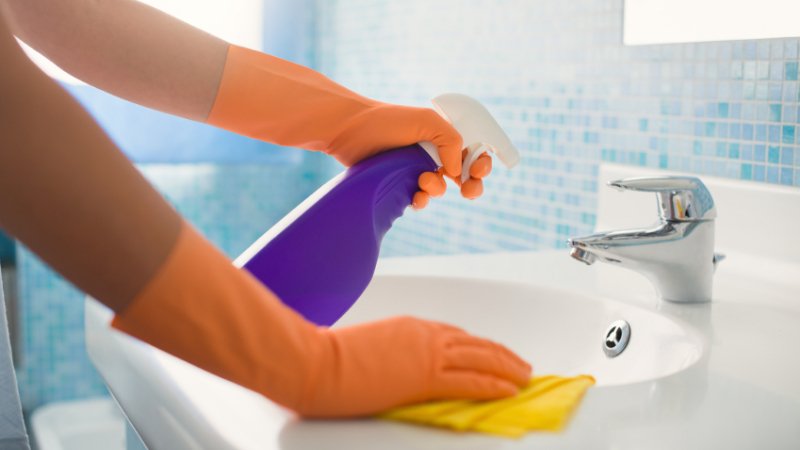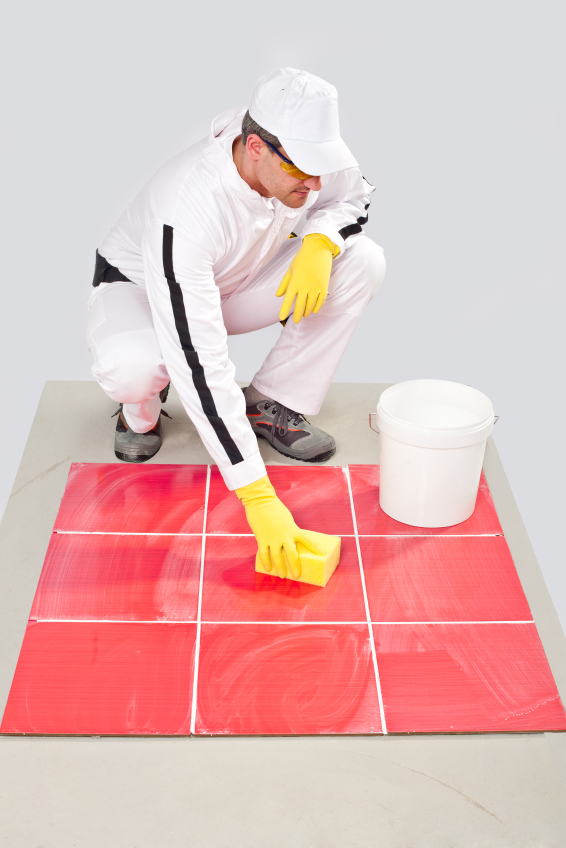Do you feel like covering your floor tiles with carpets, or installing contact paper on your wall tiles simply because they are an eyesore?
We get it.
Over time, it’s normal for your tile surface to show signs of ageing. Cracked or missing grout lines, leaks in floors and efflorescence deposits can hurt the overall appeal of your living space. However, this doesn’t mean that you have to live in a dull-looking property! Tile regrouting is the most cost-effective solution that will transform your tiled surfaces and give them a stunning makeover.
In this comprehensive guide, we will discuss why it’s necessary to do regrouting Sydney, which types of tiles can be regrouted and how to know whether your tiles need regrouting. We’ll also cover a step-by-step DIY regrouting process – let’s get started.
Why Regrouting?
Tile grouts are basically the lines that hold tiles together.
However, over time, they accumulate moisture and dirt, leading to general wear and tear, affecting the overall appearance of your tiles – and this is where regrouting steps in.
The process involves removing the old, cracked grout and replacing it with fresh, clean grout. Here are the three most notable benefits of tile regrouting:
Improved Aesthetics
If your floor tiles and wall tiles are more than 8 years old, it’s no surprise that their surfaces are an eyesore, especially if you have never done tile regrouting before.
As mentioned, over time, dirt, grim and moisture accumulate on the grouts, resulting in permanent stains, cracking and discolouration. This, in turn, affects the overall appearance of your tile surface.
Investing in tile regrouting Sydney means that you don’t have to be embarrassed about the appearance of your tiles, with experts carefully removing old grout between the lines and filling them up with new grout. You can confidently walk on those shower tiles and cook delicious meals in the kitchen area, all while admiring the sight of clean-looking tiles.
Structural Integrity
Frankly, it’s not all about the visual appearance. If you neglect regrouting tiles, other aspects of your home will also be affected.
Worn-out grout can crack and accumulate moisture. This results in leakage, which further affects the structural integrity of your walls and floor. Imagine what would happen if leakage occurs in your balcony floors. It could lead to some serious further damages. Hence it’s crucial to consider the worth of neglecting tile repair.
If you are worried that doing it will require you to splurge your money, you might want to hold that thought. The good thing about regrouting tiles is that it is relatively inexpensive than retiling, and you don’t have to do it on all the tiles of your home. You can focus on specific areas that need immediate attention before stressing about the rest.
Higher Resale Value
It’s well-known that dull-looking bathrooms and kitchen space can hinder the sale of a property. On the flip side, a well-presented shower and cooking area could help you make an easy and profitable sale. No wonder upgrading the look of your tiled areas using regrouting can help you negotiate better and attract higher ROI.
Can Wall and Floor Tiles Be Regrouted?
Regrouting is a fantastic and inexpensive alternative for retiling, and yes, grout repair can be done on floor and wall tiles.
Grout wear is indiscriminate and can occur on the floor, bathroom walls or even worse, on your kitchen walls. It is only wise to consider regrouting any area of your property that has discoloured and damaged grout lines between the tiles.
Can All Types of Tiles Be Regrouted?
Unfortunately, not all types of tiles are suitable for regrouting.
If you have glass or highly polished tiles, tile regrouting may cause more damage due to adhesion issues. In simple words, they may not adhere to new grout.
Conversely, if you have ceramic, porcelain, or stone tiles, you can confidently do regrouting, as these types of tiles are sturdy enough to withstand the process. The best part? You can even change the grout type and the colour. Provided that you hire a professional, that shouldn’t be an issue.
Cement-based and epoxy grouts are suitable for regrouting, but epoxy is better suited for wet areas like bathrooms due to its longevity.
Here is a bonus tip: If you are changing the grout type and colour, ensure that you choose one that complements your tiles. Regrouting Sydney experts can help you make an informed choice.
How to Know If Your Tiles Need Regrouting?
Age
If your tiles are more than 5 years old, you should be on a call with tile regrouting experts. The more the years, the higher the chances of your tiles’ grouts showing signs of wear and tear. Here is why- If you are doing your daily activities, including walking or showering, there is a probability you are getting dirt or grime on the surfaces. As time goes by, it accumulates, ruining your tile appearance.
However, instead of opting for entire tile replacement, changing the old grout to new can extend your tiles’ lifespan. So, if you can remember the last time you installed your tiles, tile regrouting is your best solution.
Noticeable Discolouration
Constant exposure to elements can cause grout to lose its colour. One of the biggest causes is letting spills sit for any length of time. The liquid seeps into the grout to the point where not even the strongest cleaning materials can get rid of the stain.
Talking of cleaning materials, there is also a cause of discolouration. Don’t get us wrong, not all cleaning materials. Bleach, ammonia, and acidic cleaners are great examples of cleaners that lower grout quality and cause discolouration. All in all, if your grouts are discoloured, you can do tile regrouting to restore the original colour.
Visible Damage
Damage is prone to occur in high-traffic areas of your home, including the bathroom, living room, hallway, and kitchen areas. The heavy usage is what leads to damage, crumbling, and cracking.
Again, harsh cleaning supplies also cause damage. Remember you are constantly using them to clean your bathroom or kitchen tiles. Therefore, as time passes, your grout becomes more and more fragile, leading to cracks and leakage.
Other causes of damage are the type of grout and improper sealing. To be on the safe side, consider contacting professional regrouting Sydney experts. This way, you can rest assured that your tiles are in good hands.
Mould Build-Up
Mould build-up is another sign that you need to get your tiles regrouted. While they are mostly common in showers due to the humid conditions perfect for breeding grounds for fungi, ignoring them can affect the structural integrity of your home.
Here is how – Mould feeds on and breaks down organic matter. This means the more the mould continues to spread, the weaker your walls are. Again, it may also enter your heating and ventilation systems, resulting in costly problems in the long run. And let’s not forget that mould can cause health problems, including breathing difficulties. So why risk? If this sounds like your home, it’s time to schedule a grout repair service.
The 4-Step DIY Regrouting Process
Assessment
First things first, you need to figure out whether your tiles are suitable for regrouting or not. If you have ceramic tiles, porcelain or stone tiles, you can proceed to select the type of grout and colour to fill in your tiles.
Removing Old Grout
Once you have a clear idea of the type of grout you want for your tile, the regrouting process begins. Now, to safely remove the grout without causing damage to your tiles, consider cleaning the grout. This helps remove any dirt, grime and residues that block your view of the grout.
Once you have a clear view of the grout, you want to start removing the cracked, damaged and crumbled grout. Use a grout saw to help get the job done right. However, if you are new to regrouting, you might want to invest in regrouting services. Doing it on your own may not remove the old grout efficiently, resulting in more damage.
Applying New Grout
Here comes the fun part! Take your desired type of grout and mix it as per the manufacturer’s specifications. Once you get a consistent mixture, use a grout float to evenly distribute the mixture on the floor evenly, filling in all the spaces.
After every space is filled, it’s time to get your fingers dirty. Using a wet finger, smooth out every grout line and remove the excess using a grout sponge. If you notice spaces while the grout is drying, apply the remaining mixture of the grout to fill them.
Sealing and Finishing
Once the applied grout is completely dry, apply a sealer to prevent mildew and stains from sipping in. Sealers are available at all home improvement shops in Sydney and surrounding areas.
Finishing touches is one of the simplest steps. As the new grout begins to dry out, all you have to do is use a wet rag to wipe off the remaining residue from the ceramic tiles. If it’s a little bit hard to remove the residue, try switching the rag with a dry one.
**** IMPORTANT ****
If you are unsure of how and where to begin the process, do not rush your regrouting endeavour.
Choosing the wrong type of grout or colour will result in costly damages in the long run and, even worse, ruin the aesthetic appearance of your tiled surface.
If you need highly finished and professional results, it’s always best if you consult grout repair experts in your area. They know how to treat, repair, and maintain used or existing tiled areas and create a well-presented property.
Wrapping Up
You don’t have to withstand visually unappealing tiles just because you don’t have the money to replace them.
At Tile Regrouting, we are known to offer the best regrouting services in Sydney and nearby suburbs. Our experts can breathe life into old tiles without you having to drain your wallet. So if you are around Sydney, Western Sydney, Campbelltown, Liverpool, Bankstown, Blacktown, Camden, Canterbury, Fairfield, Parramatta, Penrith, Rockdale or Kogarah, get in touch with our experts to discuss your tile replacement or regrouting needs.
To get started, contact our tile regrouting specialists today!





